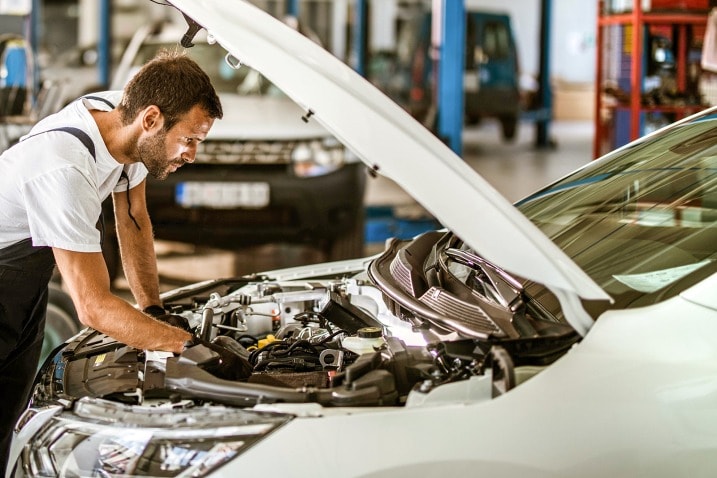All Categories
Featured
When your car needs substitutes or fixings, one of one of the most crucial choices you'll need to make is whether to use Original Devices Manufacturer (OEM) parts or aftermarket parts. Both alternatives come with their very own benefits and drawbacks, and picking the appropriate one can substantially impact the efficiency, durability, and price of your automobile fixing. Right here's an overview to help you make an educated choice between OEM and aftermarket parts.
![]()
What Are OEM Parts? When it was constructed, OEM components are made by the exact same maker that produced the original elements in your vehicle. These components are developed particularly for your make and design, guaranteeing an excellent fit and matching the specifications of the initial components. If you own a Ford automobile, an OEM component would be manufactured by Ford or an authorized Ford distributor.
One of the major benefits of OEM parts is their ensured top quality and compatibility. OEM components are a lot more likely to work well and last as lengthy as the original component since they are made to fulfill the supplier's precise requirements. In a lot of cases, they come with guarantees that guarantee your complete satisfaction. Furthermore, utilizing OEM parts can aid keep the resale worth of your vehicle given that potential purchasers typically favor cars and trucks that have been fixed with original components.
What Are Aftermarket Parts? Aftermarket parts are generated by third-party makers and are made to fit a range of lorries, not just one particular make or model. These parts are often less costly than OEM parts because they are generated in higher volumes, and the manufacturers do not birth the very same development expenses as the original producers.
While aftermarket components are developed to be compatible with the majority of lorries, the top quality can differ depending on the brand name and maker. Some aftermarket components are high-grade and provide comparable performance to OEM parts, while others might be made with more affordable products and may not perform also or last as long.
![]()
Advantages of OEM Parts. Surefire Quality and Fit: Considering that OEM parts are made by the lorry's producer, they're ensured to satisfy the precise specifications of the original parts. This makes certain an exact fit and optimum efficiency. Guarantee: OEM components often come with a manufacturer's warranty, using peace of mind and protection versus issues. Resale Worth: Cars repaired with OEM parts are often a lot more appealing to customers, which can help preserve or also enhance the resale worth of your vehicle. Long life: OEM components are normally built to last as long as the original components, suggesting you might have less concerns and substitutes in the future. Advantages of Aftermarket Parts. Reduced Expense: Aftermarket parts are usually much more economical than OEM parts, making them an attractive choice for those looking to conserve cash on fixings. Range: There is a wider variety of aftermarket components available, including updated or performance-enhancing alternatives that might not be available in OEM components. This is specifically eye-catching to cars and truck fanatics that wish to modify their car. Availability: Aftermarket components are commonly offered and often easier to discover than OEM components, which can be especially valuable for older vehicles or hard-to-find elements. Development: Several aftermarket parts are developed with enhancements or added features that improve the car's performance or look, such as high-performance brake pads or exhaust systems. Drawbacks of OEM Components. Higher Cost: OEM components are commonly more expensive than aftermarket choices, which can be a significant variable if you get on a budget. Limited Alternatives: OEM parts may supply fewer options for personalization or performance upgrades contrasted to aftermarket parts. Downsides of Aftermarket Components. Inconsistent Top quality: Aftermarket components can differ widely in terms of quality. Some producers create components that carry out equally as well as OEM parts, while others might reduce corners to conserve prices. Fitment Issues: While aftermarket parts are made to fit most vehicles, they may not always be an exact match for your auto, bring about possible compatibility issues. Service Warranty Limitations: Aftermarket parts might not come with service warranties or may use restricted defense, which might cause additional expenses if the component stops working prematurely. Just how to Select In Between OEM and Aftermarket Parts. When choosing in between OEM and aftermarket parts, there are several factors to consider:
Spending plan: If cost is a key issue, aftermarket components may be the much better option because of their reduced price. If you can afford it and are worried concerning long-term dependability, OEM components may be worth the financial investment. Vehicle Age and Condition: If you have a more recent car that's still under service warranty, utilizing OEM parts may be the most effective option to maintain the automobile's integrity and protect its resale worth. For older cars, aftermarket parts can be a cost-effective solution to maintain the cars and truck operating. Performance and Modification: If you want enhancing your automobile's efficiency or appearance, aftermarket parts use even more variety and choices for upgrades. Supplier Suggestions: Some vehicle makers might recommend or need the usage of OEM components for certain repair work, especially for safety-related elements like air bags or brake systems. Constantly consult your owner's guidebook or an expert auto mechanic for support. Final thought. Inevitably, the choice between OEM and aftermarket components relies on your details requirements, choices, and budget plan. While OEM parts provide a guaranteed fit and better, aftermarket parts can use expense financial savings and a more comprehensive variety of options. By thoroughly thinking about elements like expense, car age, and preferred efficiency, you can make the very best choice for your car repairs, guaranteeing that your auto remains in great working condition without damaging the bank.

What Are OEM Parts? When it was constructed, OEM components are made by the exact same maker that produced the original elements in your vehicle. These components are developed particularly for your make and design, guaranteeing an excellent fit and matching the specifications of the initial components. If you own a Ford automobile, an OEM component would be manufactured by Ford or an authorized Ford distributor.
One of the major benefits of OEM parts is their ensured top quality and compatibility. OEM components are a lot more likely to work well and last as lengthy as the original component since they are made to fulfill the supplier's precise requirements. In a lot of cases, they come with guarantees that guarantee your complete satisfaction. Furthermore, utilizing OEM parts can aid keep the resale worth of your vehicle given that potential purchasers typically favor cars and trucks that have been fixed with original components.
What Are Aftermarket Parts? Aftermarket parts are generated by third-party makers and are made to fit a range of lorries, not just one particular make or model. These parts are often less costly than OEM parts because they are generated in higher volumes, and the manufacturers do not birth the very same development expenses as the original producers.
While aftermarket components are developed to be compatible with the majority of lorries, the top quality can differ depending on the brand name and maker. Some aftermarket components are high-grade and provide comparable performance to OEM parts, while others might be made with more affordable products and may not perform also or last as long.

Advantages of OEM Parts. Surefire Quality and Fit: Considering that OEM parts are made by the lorry's producer, they're ensured to satisfy the precise specifications of the original parts. This makes certain an exact fit and optimum efficiency. Guarantee: OEM components often come with a manufacturer's warranty, using peace of mind and protection versus issues. Resale Worth: Cars repaired with OEM parts are often a lot more appealing to customers, which can help preserve or also enhance the resale worth of your vehicle. Long life: OEM components are normally built to last as long as the original components, suggesting you might have less concerns and substitutes in the future. Advantages of Aftermarket Parts. Reduced Expense: Aftermarket parts are usually much more economical than OEM parts, making them an attractive choice for those looking to conserve cash on fixings. Range: There is a wider variety of aftermarket components available, including updated or performance-enhancing alternatives that might not be available in OEM components. This is specifically eye-catching to cars and truck fanatics that wish to modify their car. Availability: Aftermarket components are commonly offered and often easier to discover than OEM components, which can be especially valuable for older vehicles or hard-to-find elements. Development: Several aftermarket parts are developed with enhancements or added features that improve the car's performance or look, such as high-performance brake pads or exhaust systems. Drawbacks of OEM Components. Higher Cost: OEM components are commonly more expensive than aftermarket choices, which can be a significant variable if you get on a budget. Limited Alternatives: OEM parts may supply fewer options for personalization or performance upgrades contrasted to aftermarket parts. Downsides of Aftermarket Components. Inconsistent Top quality: Aftermarket components can differ widely in terms of quality. Some producers create components that carry out equally as well as OEM parts, while others might reduce corners to conserve prices. Fitment Issues: While aftermarket parts are made to fit most vehicles, they may not always be an exact match for your auto, bring about possible compatibility issues. Service Warranty Limitations: Aftermarket parts might not come with service warranties or may use restricted defense, which might cause additional expenses if the component stops working prematurely. Just how to Select In Between OEM and Aftermarket Parts. When choosing in between OEM and aftermarket parts, there are several factors to consider:
Spending plan: If cost is a key issue, aftermarket components may be the much better option because of their reduced price. If you can afford it and are worried concerning long-term dependability, OEM components may be worth the financial investment. Vehicle Age and Condition: If you have a more recent car that's still under service warranty, utilizing OEM parts may be the most effective option to maintain the automobile's integrity and protect its resale worth. For older cars, aftermarket parts can be a cost-effective solution to maintain the cars and truck operating. Performance and Modification: If you want enhancing your automobile's efficiency or appearance, aftermarket parts use even more variety and choices for upgrades. Supplier Suggestions: Some vehicle makers might recommend or need the usage of OEM components for certain repair work, especially for safety-related elements like air bags or brake systems. Constantly consult your owner's guidebook or an expert auto mechanic for support. Final thought. Inevitably, the choice between OEM and aftermarket components relies on your details requirements, choices, and budget plan. While OEM parts provide a guaranteed fit and better, aftermarket parts can use expense financial savings and a more comprehensive variety of options. By thoroughly thinking about elements like expense, car age, and preferred efficiency, you can make the very best choice for your car repairs, guaranteeing that your auto remains in great working condition without damaging the bank.
Latest Posts
Discover WyHy Federal Credit Union – Exclusive Benefits for Your Financial Success
Published en
1 min read
Why Routine Vehicle Maintenance at Montclare Auto Repair Keeps Your Wallet Happy
Published en
1 min read
Seamless Aluminum Rain Gutters: The Smart Selection for Your Home
Published en
1 min read
More
Latest Posts
Discover WyHy Federal Credit Union – Exclusive Benefits for Your Financial Success
Published May 28, 25
1 min read
Why Routine Vehicle Maintenance at Montclare Auto Repair Keeps Your Wallet Happy
Published May 26, 25
1 min read
Seamless Aluminum Rain Gutters: The Smart Selection for Your Home
Published May 24, 25
1 min read